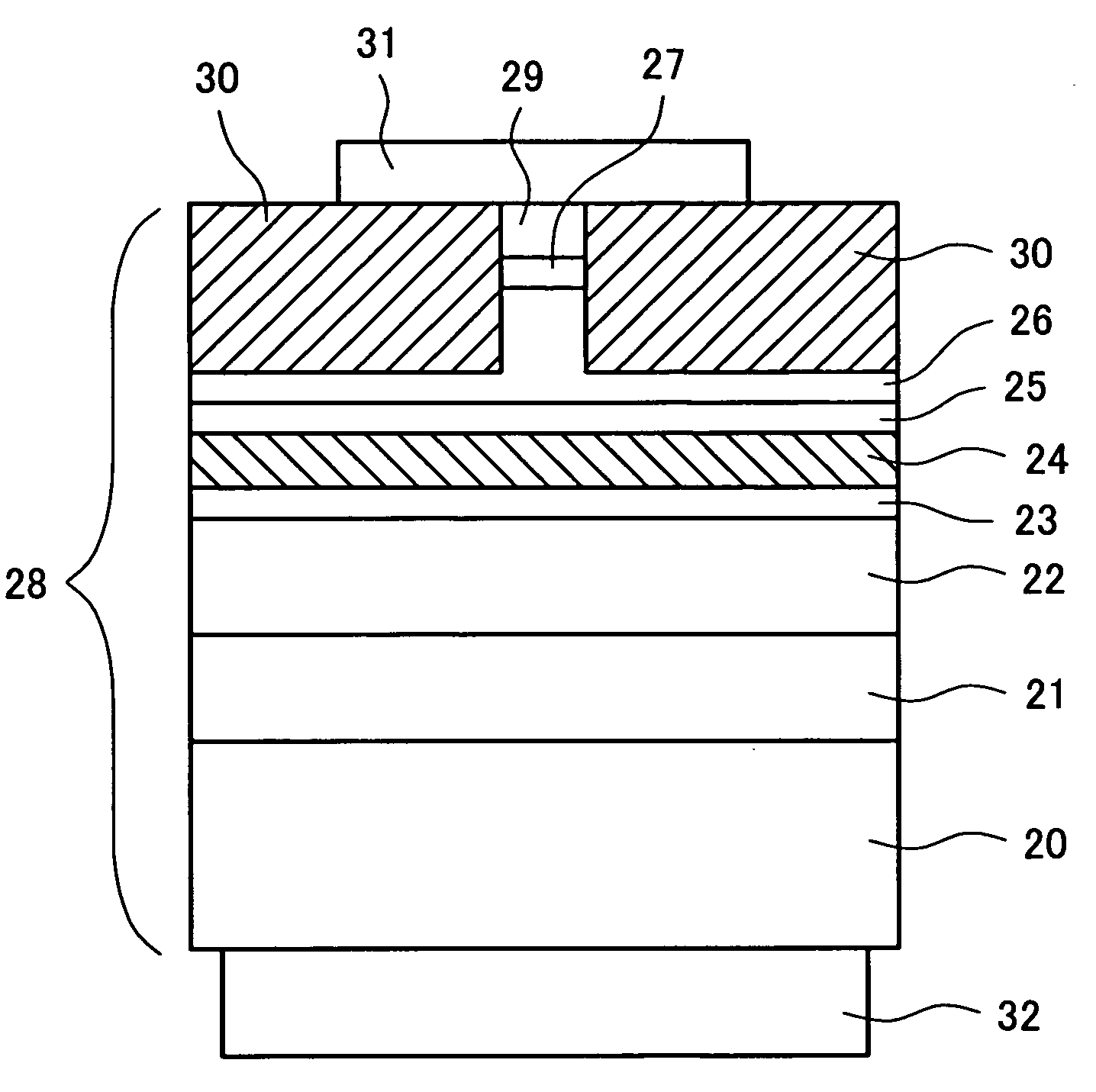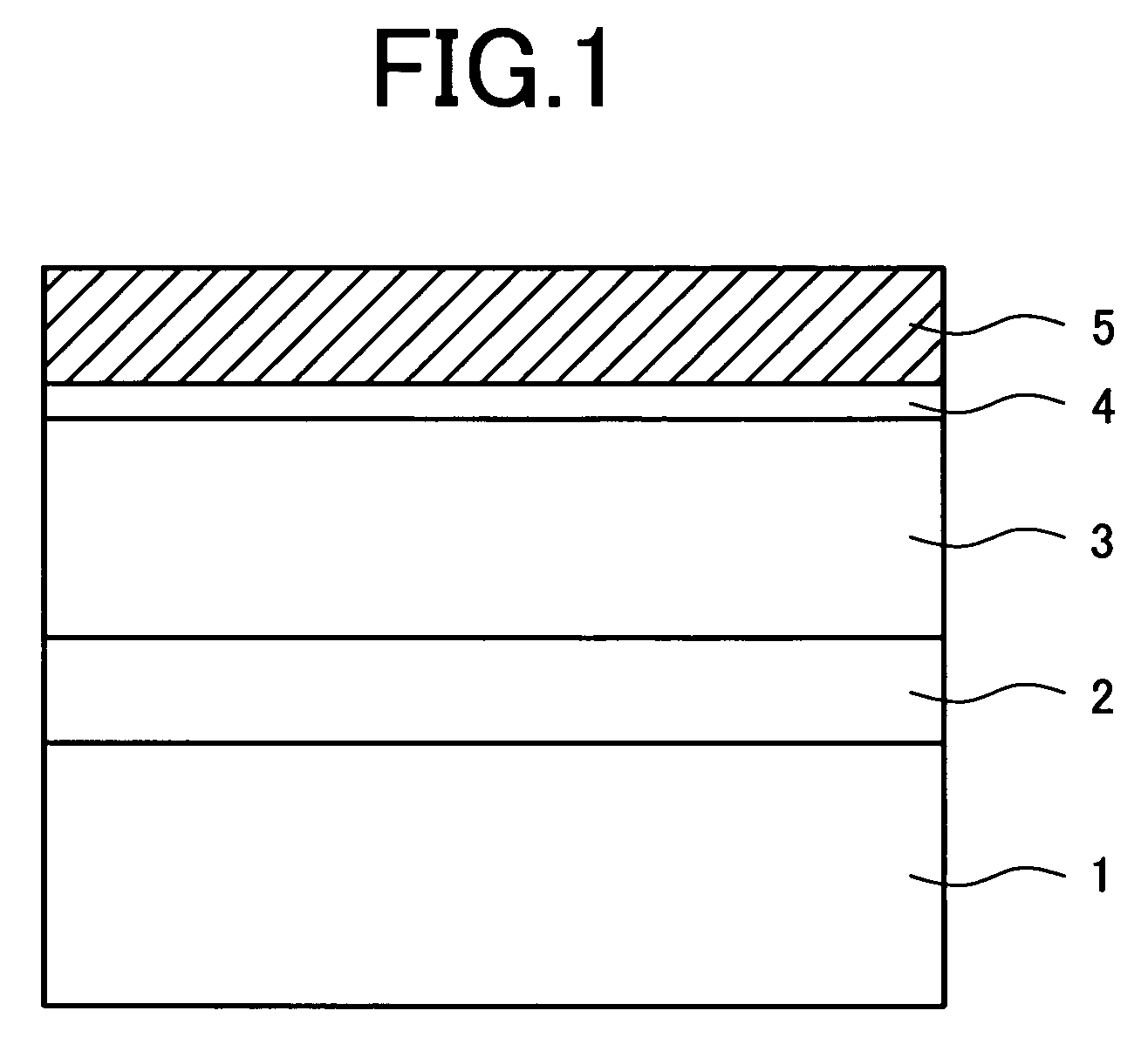Nitride semiconductor based light-emitting device and manufacturing method thereof
- Summary
- Abstract
- Description
- Claims
- Application Information
AI Technical Summary
Benefits of technology
Problems solved by technology
Method used
Image
Examples
first embodiment
[0060]FIG. 1 is a view schematically showing a most distinctive structure fabricated in processes of a manufacturing method according to the present invention, the processes being encompassed in the manufacturing method of a nitride semiconductor based light-emitting device. Specifically, FIG. 1 is a cross-sectional view showing a stack structure after a process (B), described below.
[0061]In the present preferred embodiment, for the sake of easy comparison between an effect produced by the manufacturing method according to the present invention and an effect produced by the prior art, explanation will be made by using the same substrate as that for use in explicitly describing the problems experienced by the prior art under the section of “Background of the Invention”, that is, by using a sapphire substrate having only an Mg doped GaN layer [having an Mg doping concentration (i.e., an SIMS value) of 7.4×1019 cm−3 and a film thickness of 2.0 μm] growing thereon via an AlN buffer laye...
second embodiment
[0081]Subsequently, a description will be given of a manufacturing method of a first metal film formed by stacking two kinds of metals out of the above-described four kinds of metals in one preferred embodiment and its effect.
[0082]Also in the present preferred embodiment is used the same substrate as that in the first embodiment.
[0083]A first metal film 4 of a dual layer structure consisting of a Pd film 9 having a film thickness of 10 nm as a first layer and a Pt film 33 having a film thickness of 15 nm as a second layer is formed on an Mg doped GaN layer in contact therewith. Thereafter, a tungsten oxide film 5 having a film thickness of 500 nm less than that in the above-described preferred embodiment is formed by sputtering (as shown in FIG. 3). As a result of an annealing experiment in the same manner as the above-described preferred embodiment, it has been found that a hydrogen concentration decreases down to about a half of an initial hydrogen concentration at a timing when ...
third embodiment
[0090]Subsequently, a description will be given of a manufacturing method and its effect in the case where an acceptor impurity is very thinly formed between a first metal film and a tungsten oxide film.
[0091]Also in the present preferred embodiment is used the same substrate as that in the first embodiment.
[0092]A Pd film 9 having a film thickness of 30 nm serving as a first layer formed of a first metal film 4, a Zn film having a film thickness of 3 nm serving as a second layer made of an acceptor impurity material 6 and a tungsten film 34 having a film thickness of 100 nm serving as a third layer are formed on an Mg doped GaN layer in contact therewith by well-known electron beam deposition and resistance heating deposition.
[0093]The thickness of the above-described Zn film, that is, 3 nm is a value indicated by a film thickness monitor at the time of coating. The Zn film is actually formed into not a film shape but an island shape.
[0094]Thereafter, a metal color is decolored fro...
PUM
 Login to View More
Login to View More Abstract
Description
Claims
Application Information
 Login to View More
Login to View More - R&D
- Intellectual Property
- Life Sciences
- Materials
- Tech Scout
- Unparalleled Data Quality
- Higher Quality Content
- 60% Fewer Hallucinations
Browse by: Latest US Patents, China's latest patents, Technical Efficacy Thesaurus, Application Domain, Technology Topic, Popular Technical Reports.
© 2025 PatSnap. All rights reserved.Legal|Privacy policy|Modern Slavery Act Transparency Statement|Sitemap|About US| Contact US: help@patsnap.com



